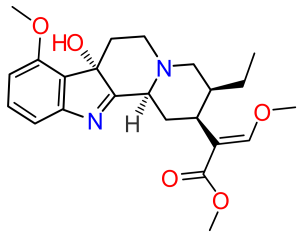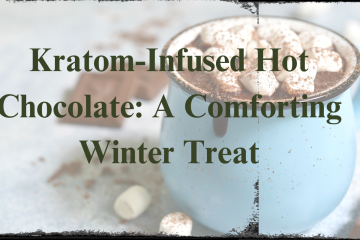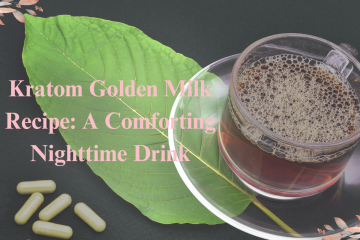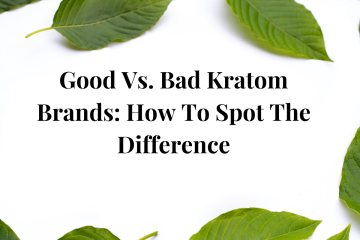While the coffee plant—which is related to kratom—contains one primary alkaloid (caffeine), kratom has over 40 different alkaloids. The most abundant alkaloids in kratom are mitragynine and 7-hydroxymitragynine. Unlike other Mitragyna speciosa alkaloids, these two primary kratom alkaloids are present in every kratom leaf and commercial strain.
Kratom alkaloids are commonly misunderstood by consumers, and there is a lot of misinformation on how kratom works. If you’re looking for 7-hydroxymitragynine research, it didn’t help that information about this chemical was difficult to gather in the past. Today science has evolved to a point where not only have these chemicals been identified in the kratom leaf, but researchers have even discovered interesting details about them!
It’s always a good idea to stick to scientific studies and reputable sources when researching kratom. This is the only way to fight kratom misinformation and to prioritize scientific evidence over misleading accounts. That being said, we’ve done some of the research for you and have put together an informational guide on everything you need to know about 7-hydroxymitragynine.
What Are Alkaloids?
First and foremost, many people aren’t often familiar with the definition of alkaloids or what it means. Alkaloids are a vast group of naturally occurring organic compounds which contain nitrogen atoms or other atoms in their structures. Many plant species produce these compounds, which they store in their leaves, stem, roots, and fruits. The types of alkaloids and their amounts vary by plant, and the processes used on the plant can also impact its alkaloid content and variety.
7-hydroxymitragynine is one of the two most important alkaloids present inside kratom and is often referred to as 7-OH. The quantity of this alkaloid is fairly limited in all kratom leaves, but the quantity of 7-hydroxymitragynine is not the most important factor in determining its function in kratom strains.
The Relationship Between Alkaloids and Different Strains of Kratom
If you’ve ever looked at a kratom strain chart, you’ve noticed that different types of kratom strains are associated with different qualities. But few of these kratom strain charts answer the question, “what are the differences between kratom strains?” In reality, the reason why kratom strains are different comes down to their alkaloid content.
Scientific research on kratom’s alkaloids reveals that different strains of kratom have different alkaloid profiles, although they are not due to different genetics in kratom plants. In other words, the production of different kratom strains can have different varieties, quantities, and concentrations of alkaloids, but such differences are not due to where the kratom plant is grown or the vein color of the kratom leaf. However, as kratom is an unregulated herb, alkaloids remain fairly under-studied.
Fortunately, many clinical researchers have pushed for the need to study kratom and its alkaloids more thoroughly. Even in the past few years, 7-hydroxymitragynine research has come to light, as well as details on the other 40 identified kratom alkaloids.
Kratom’s Main Alkaloids: 7-hydroxymitragynine and Mitragynine
Before the 1990s, it was believed that Mitragynine was the principal alkaloid present in the kratom plant. Later, research showed that 7-hydroxymitragynine was the principal alkaloid that gave kratom plants their most distinct properties. Since 7-hydroxymitragynine is a direct derivative of Mitragynine, it is essential to learn a little about Mitragynine as well. It is the most commonly found and abundant alkaloid in the kratom leaves. It was first discovered in 1921; however, its chemical structure was properly explained in 1964.
Composition of 7-hydroxymitragynine 
First described in 1994, 7-hydroxymitragynine (7-OH) is considered by researchers to be the oxidized derivative of Mitragynine. The structure of 7-OH is similar to Mitragynine, except for the additional hydroxyl group.
7-hydroxymitragynine is has been studied to be a natural product of the Mitragynine metabolized in the kratom tree. It occurs due to the auto-oxidation of Mitragynine to 7-hydroxymitragynine.
Studies have shown that the mu-opioid receptor activity of 7-hydroxymitragynine comes to a halt when small alterations are made to the acrylate and ethyl groups on one of the rings.
Chemical Formula
Looking at the scientific aspect of things can often be boring and monotonous. However, they will help you to truly understand the science behind kratom, which can help reverse the negative image surrounding the Mitragyna Speciosa tree.
The science behind kratom leaves and their chemicals are what led to the plant’s mystery in the first place.
Other Alkaloids in Kratom
You may have only heard about two of the most prominent alkaloids present in the kratom leaves, but did you know that kratom contains 40 different identified alkaloids?
The principal alkaloids inside these kratom leaves contain 7-hydroxymitragynine, Mitragynine, Speciociliatine, Speciogynine, and Paynantheine.
The differences these alkaloids can cause in the kratom leaves vary depending on several factors, although research has found differences in kratom plant genetics to not be responsible for large differences in kratom alkaloids.
Rather, it seems more likely that kratom strains develop from differences in drying conditions or other post-harvesting methods.
Finding Authentic Alkaloid Levels in Kratom Products
Not all vendors in the kratom business care about their customers as much as we do at Buy Kratom Bulk USA. For some, making the highest percentage of profit is the highest agenda. To achieve this, they will look to purchase the cheapest kratom possible and then sell it at a high price point to their customers. Because of this, customers often end up getting low-quality kratom that leaves them unsatisfied.
There is, however, something even more alarming that is taking place in the kratom industry! A handful of vendors have found a way to enhance the properties of their Kratom by adding extra amounts of 7-hydroxymitragynine to their kratom! By doing this, they are enhancing the alkaloid concentration levels of the kratom strain but they must label it as such. Also, adding ingredients to the kratom strains can change the characteristic properties of that particular kratom product, especially since kratom is unregulated and may be adulterated.
The best kratom to buy is always pure, fresh, natural kratom from the Mitragyna speciosa tree.
Where to Safely Buy Kratom
With such sketchy practices continuing to take place in the kratom world, you must choose top-quality vendors to obtain your kratom from, especially since kratom is currently unregulated by the FDA. It’s important for the safety and future of kratom.
If you want to know where you can find such top-quality vendors, you’re already on the right track by having found us! At Buy Kratom Bulk USA, customer satisfaction is our priority, and for this, we have obtained our kratom directly from expert farmers in Southeast Asia.
Just give our homepage a visit and take a look at all the top-quality kratom for sale we have available for you!
Or you can also read our detailed guide on where to buy kratom online.
Final Words
There are a variety of alkaloids that are present inside the kratom leaf; however, new kratom studies are needed to further understand the science of kratom and its alkaloids. As kratom grows in popularity, enthusiasts all over the world are looking to learn more and more about kratom, and more study grants are being allocated to kratom researchers. Fortunately, some brilliant minds have already gathered important fundamental information on kratom.
To learn more about kratom, make sure to visit our kratom blogs section.




